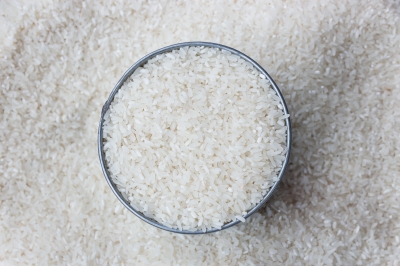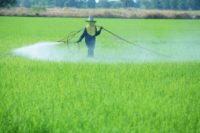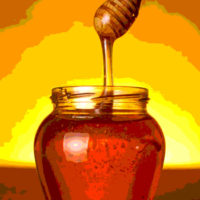Monitoring pesticide residues in fruit and vegetables remains a key priority for international food safety. Crop growth and maintenance within emerging export economies such as China and India operate under substantially different regulations compared to their Western counterparts. Stringent pesticide monitoring is therefore essential to meet international regulatory requirements, ensure product safety and enable export to the widest possible market.
?Over the past decade, the methods employed for pesticide monitoring have aligned with advances in the sophistication and availability of powerful analytical technology. Since 2004, the U.S. Food and Drug Administration (FDA) has recommended the QuEChERS (Quick, Easy, Cheap, Effective, Rugged and Safe) method for pesticide residue screening based on multi-reaction monitoring (MRM) with advanced gas or liquid chromatography coupled mass spectrometry. However, achieving accuracy and robustness with these routine quality control methodologies can be complex and time consuming, particularly when it comes to trace pesticide analysis within complex biological matrices.
This article demonstrates how triple quadrupole mass spectrometry coupled gas and liquid chromatography systems [SCION gas chromatography/mass spectrometry (GC-MS) and EVOQ liquid chromatography/mass spectrometry (LC-MS)] provide the sensitive MRM analysis required for pesticide quantification in domestic and exported goods. Further, experimental data is presented illustrating the use of these systems to run a recently modified FDA QuEChERS sample preparation protocol––a simple, less expensive and unified alternative to conventional QuEChERS screening.
Breaking Down the Barriers to International Trade
Today, emerging economies around the world are benefiting substantially from the increased liberalization of global trade. Agricultural imports to the U.S. from China, for example, increased from $800 million in 2000 to approximately $3.4 billion in 2010. The imports continue to grow, exemplifying a strengthening commercial relationship that would have seemed incredible 30 years ago.[1] However, several barriers still exist that limit producers from accessing the full potential of the export market. Chief among these is the lack of global consensus or standardization on pesticide use. Products imported from regions where pesticide use is less restricted to those with stringent regulations are frequently subject to detention and often returned to their country of origin or disposed of, resulting in an immediate loss in investment.
In response, governments around the world are taking steps to bring their regulations guiding crop growth and maintenance in line with their Western counterparts. In Pakistan, the provincial government has announced its intention to harmonize rice production with FDA guidance, whereas China has recently moved to curtail the use of harmful pesticides widely banned on the international stage.[2, 3] Robust and accurate pesticide detection methods are essential to ensure consumable products comply with both international and domestic regulatory standards.
Extracting pesticide species from complex fruit and vegetable biomass samples is a complicated process. Moreover, achieving the sensitivity and specificity required to deliver and maintain accurate and reliable trace level analysis has been––until recently––beyond the scope of conventional analytical techniques. Finally achieving this high performance can be a laborious and time intensive task, which is undesirable for high throughput routine quality control. Advancing detection methodologies and analytical technology to accurately, robustly and rapidly qualify and quantitate trace pesticide residue is therefore a priority for regulatory bodies and instrument developers alike.
Improving Detection Procedures
In 2004, the FDA introduced QuEChERS sample preparation for pesticide screening. QuEChERS overcomes many of the limitations associated with routine quality control including lengthy analysis times, high sample volume and lack of assurance on complete pesticide recovery. Today, the method is standardized within AOAC 2007.01 EN15662 and has proven orders of magnitude more productive than conventional preparation techniques.
The QuEChERS protocol relies on homogenizing a sample through blending followed by centrifugation and extraction with a suitable reagent. The sample is then analyzed using a suitable analytical tool. The sophistication and availability of modern gas and liquid chromatography coupled mass spectrometry systems has led to them being adopted as the platform for QuEChERS screening.
In both GC-MS and LC-MS, analytes are eluted from the separation column into the MS component where ions are then detected and characterized in relation to their molecular mass. GC-MS is best suited for the analysis of nonpolar, volatile compounds while LC-MS is also able to separate nonvolatile species and is amenable for a greater range of pesticide products. Modern LC-MS instruments are generally considered more powerful, however where routine detection of known volatile analytes is required GC-MS systems are a suitable and lower priced solution.
Despite the increased sophistication, many commercially available GC-MS and LC-MS systems struggle to deliver the sensitivity and specificity for low level screening operations and many technical aspects of their functionality limit performance. Triple quadrupole Multi Reaction Monitoring (MRM) overcomes many of these limitations to deliver these improvements and is considered the gold standard for pesticide detection.
Innovations in LC-MS and GC-MS to Improve Pesticide Quantification Performance
Multiple reaction monitoring fragments analytes into multiple ions (see Figure 1). Incorporating this technique into GC-MS and LC-MS results in greater specificity, a dramatic increase in signal-to-noise ratio and better quantitative performance. In this way, MRM helps to maximize reliability in pesticide detection and ensure confidence in results.
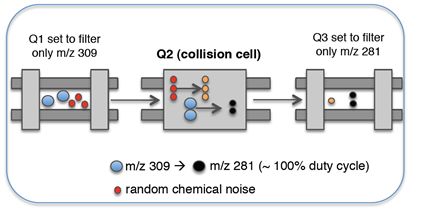
Figure 1: Triple quadrupole mass spectrometry multi reaction monitoring fragments analytes into multiple ions to achieve greater specificity and confidence in analysis.
Innovations in hardware have refined the performance of triple quadrupole MS for pesticide quantification to ensure high performance is maintained throughout high throughput analysis. In GC-MS, implementing an axial ion source reduces build up in the ion source, as demonstrated by the Bruker SCION GC-MS Triple
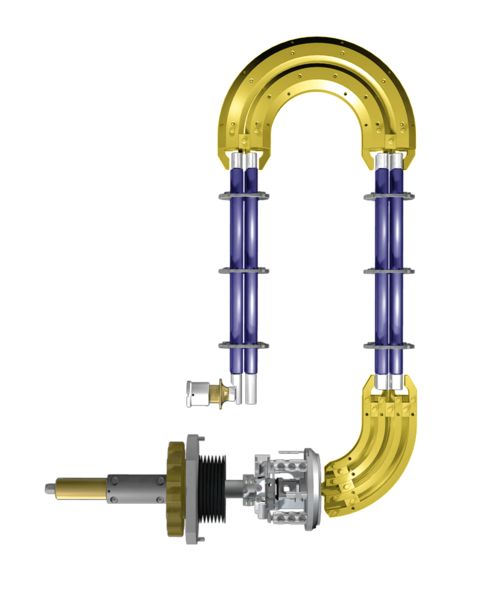
Quadrupole (see Figure 2). This maintains higher signal to noise across thousands of analyses, ensuring continued high performance and increased instrument up time with reduced cleaning.
Figure 2: An axial ion source provides higher transmission, allowing increased instrument up time with reduced cleaning.
Advances in LC-MS/MS design deliver similar improvements in sensitivity and robustness by optimizing ion transfer. For example, using an active exhaust to reduce gas recirculation within the ion source reduces chemical noise, cuts cleaning and maintains sensitivity during high throughput pesticide analysis. The development of vacuum insulated, probe-heated electrospray (VIP-HESI) technology moreover protects thermally labile pesticide species which commonly breakdown prior to nebulization. This further enhances the pesticide range that LC-MS can tackle, while again improving robustness.
.jpg) Figure 3: Vacuum insulated, probe-heated electrospray technology ensures high signal-to-noise ratios and superior robustness of thermally labile species.
Figure 3: Vacuum insulated, probe-heated electrospray technology ensures high signal-to-noise ratios and superior robustness of thermally labile species.
Easing Method Development with Compound-Based Scanning
As multi-residue pesticide analysis methods can have hundreds of targets to quantify in a single run, developing new methods can be a time-consuming task. However, compound-based scanning (CBS) streamlines method development for multi-residue analysis, using a compound library containing more than 2,500 MRM transitions covering more than 900 contaminants. CBS dramatically reduces the time taken to set the initial MRM methods to give accurate data while simultaneously improving workflow and productivity.
Software advances have also streamlined data review, to deliver the fastest sample-to-report time possible. Exception based data review significantly reduces the error rate for quantitative analysis by flagging any runs that fail to meet pre-set method criteria, as demonstrated by PACER from Bruker. This removes the need for nonexpert human interaction to judge chromatograms and enables analysts to focus on problem areas. In this way PACER instantly increases efficiency by eliminating unproductive time without compromising data quality. Ultimately, this works to ensure maximum productivity and reliability in pesticide screening.
The following case study explores how LC-MS/MS and GC-MS/MS systems incorporate these hardware and software developments to provide robust, fast and simple analysis of complex food matrices, while making use of the new QuEChERS protocol.
Case Study: Analysis of Fruit and Vegetables with GC-MS/MS and LC-MS/MS
Samples of rice, avocado and spinach––all representing low moisture, fatty and high moisture content vegetable groups––were extracted using a modified QuEChERS protocol (Figure 4).[4] Thirty pesticides amenable for both GC-MS and LC-MSwere spiked into the three vegetable matrices and prepared for analysis with the EVOQ LC-MS/MS and the SCION GC-MS/MS. The MRM method development workflow was set up using CBS. Target pesticides were selected from the software's MRM library before being exported to the CBS method editor. Optimal dwell times were then automatically calculated for each MRM based on its retention time window. 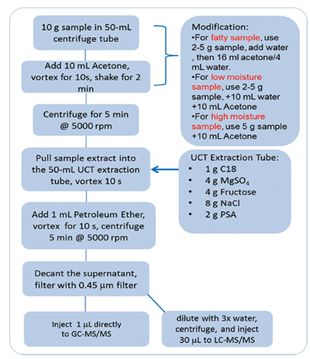
Figure 4: The modified QuEChERS method further simplifies sample preparation of complex matrices.
Excellent sensitivity was achieved for multi-residue pesticides within the vegetable matrices using both the GC-MS/MS and LC-MS/MS systems. This is shown in Table 1, which illustrates the R2 values for the pesticides achieved, demonstrating excellent linearity was achieved.
Table 1: R2 values achieved for the calibration of pesticides in different matrices using GC-MS/MS and LC-MS/MS.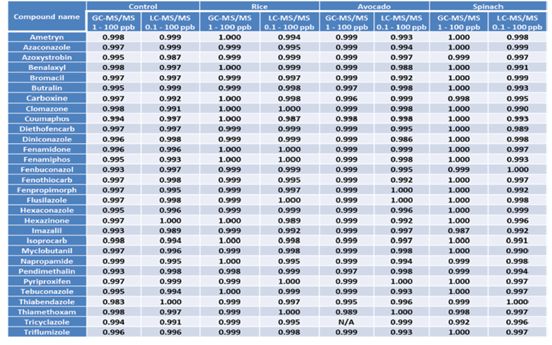
Controlling Concentrations
Meeting international pesticide regulations is one of the major challenges to exploiting the expanding consumables market. The need to sharpen the sensitivity, selectivity and ease of analysis for these routine pesticide analysis operations continues to drive innovation in instrument design. The advances in tandem mass spectrometry coupled chromatographic system hardware and software provide this high performance while simplifying method development, reducing instrument downtime for maintenance and maximizing ease of use, to meet the ongoing needs of pesticide monitoring.
Joe Anacleto, Helen (Qingyu) Sun and Zicheng Wang are all employees of Bruker Daltronics. Visit Bruker.com for more information.
References
1. Overview of US Agricultural Trade with China - Xiuzhi Wang, Edward A. Evans, and Fredy H. Ballen.
2. http://www.brecorder.com/agriculture-a-allied/183:pakistan/1192299:rice-a-mangoes-steps-taken-to-bring-exports-in-line-with-international-standards/?date=2014-06-13.
3. http://www.chinadaily.com.cn/bizchina/2011-07/08/content_12864775.htm.
4. Application Note #1824184 Rapid and Simple Approaches to Multi-residue Pesticide Analysis in Fruits and Vegetables on both GC-MS/MS and LC-MS/MS.
